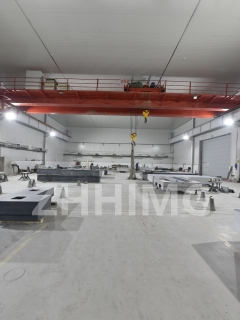Granite machine bases have become increasingly popular in the manufacturing industry due to their excellent stability, vibration damping, and thermal stability properties. Granite bases are essential components in many high-precision machines for these reasons.
When assembling, testing, and calibrating granite bases for AUTOMATION TECHNOLOGY products, it is crucial to follow several important steps to ensure the product is of the highest quality. This guide will outline these steps and provide useful tips for each
Assembly
The first step in assembling a granite base is to unpack all the parts carefully, ensuring that none are damaged during transport. Ensure that all parts are clean before starting the assembly process. The assembly of granite bases usually involves bolting together multiple pieces of granite slabs, ensuring they are precisely aligned. When making these connections, it is essential to use high-strength bolts that will last for many years. A small mistake in the assembly process can cause significant issues during the calibration or testing process leading to downtime and delays.
Testing
After assembling the granite base, it is essential to test for any defects that may cause instability or reduce its vibration damping properties. A surface plate is an excellent tool for testing since it provides a flat, stable surface to compare the granite base to. By using an indicator or a micrometer, it is possible to check if the surface of the granite base is smooth and flat, thus making sure that there are no defects. It is also important to test the granite base's weight, making sure it is within the recommended range.
Calibration
Granite bases must be calibrated to ensure that they meet the required specifications and guarantee reliable performance. During calibration, precise measurements are made to determine the accuracy of the granite base. A calibration certificate may be issued after calibration is completed upon a request by a customer or should be available upon request for quality assurance. It is advisable to have a professional VDI6015 calibration using a laser interferometer or equivalent measuring system done on a regular basis to ensure the granite base remains calibrated to prevent any potential measurement errors from occurring.
Conclusion
Granite bases are essential components in machines used in the manufacturing industry for their excellent stability, vibration damping, and thermal stability properties. Assembling, testing, and calibrating these bases should be done with precision to ensure their quality. Following these steps will help ensure that the granite base is of the highest quality and will guarantee the reliability of the machine it is used in. Regular calibration of the granite base will help uphold its accuracy and make sure it performs to the required specifications.
Post time: Jan-03-2024

